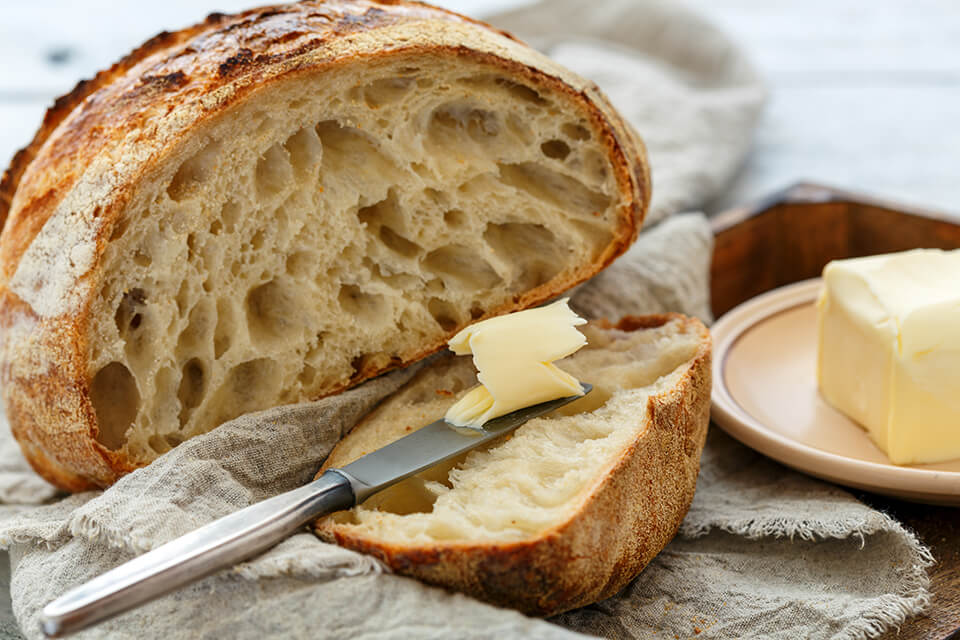Elevate your baking prowess with artisan bread making. Join us as we explore the intricacies of dough fermentation, shaping techniques, and achieving that coveted crisp crust and tender crumb.
Elevate Your Baking Prowess with Artisan Bread Making
Artisan bread making is a rewarding and delicious hobby that can be enjoyed by people of all skill levels. It is a great way to learn about the science of baking and to experiment with different flavors and techniques.
In this article, we will explore the intricacies of dough fermentation, shaping techniques, and achieving that coveted crisp crust and tender crumb. We will also provide some tips for beginners who are just starting out.
Dough Fermentation
Dough fermentation is a crucial step in the bread-making process that greatly influences the flavor, texture, and overall quality of the final product. During fermentation, yeast or sourdough cultures consume the sugars in the dough, producing carbon dioxide gas that causes the dough to rise. This process also develops complex flavors and improves the digestibility of the bread.
Artisan bakers often opt for long fermentation periods to enhance the flavor profile of their bread. This slow and controlled fermentation allows enzymes to break down complex carbohydrates into simpler sugars, resulting in a more flavorful and aromatic loaf. Additionally, longer fermentation times also contribute to a better texture and improved shelf life.
There are two main types of fermentation:
- Primary fermentation: This is the initial fermentation that takes place after the dough is mixed. It typically takes place at room temperature for 2-4 hours.
- Secondary fermentation: This is the secondary fermentation that takes place after the dough has been shaped. It can take place at room temperature or in the refrigerator, and can last for several hours or even overnight.
The length of the fermentation process will affect the flavor and texture of the bread. A longer fermentation will produce a more sour flavor and a more tender crumb.
Shaping Techniques
The shaping technique used will also affect the final shape and texture of the bread. There are many different shaping techniques, but some of the most common ones include:
- Round loaves: One popular shaping technique is the “boule” or round loaf shape. This classic shape is achieved by gently folding and tucking the dough to create surface tension, which helps the bread maintain its shape during baking. The boule shape is versatile and can be used for a wide range of bread types, from crusty country loaves to soft sandwich bread.
- Batard: Another common shaping technique is the “batard” or oval loaf shape. This shape is achieved by elongating the dough and rolling it tightly into a cylinder. The batard shape is ideal for baguettes, ciabatta, or any bread that requires a larger surface area for crust development.
- Couque: This is a small, round loaf that is shaped by pinching the edges of the dough together.
The shaping technique should be chosen based on the type of bread being made. For example, a round loaf is typically used for sandwich bread, while a batard is often used for baguettes.
Achieving a Crisp Crust and Tender Crumb
The final step in artisan bread making is baking. The goal is to achieve a crisp crust and a tender crumb.
The crust and crumb of artisan bread are what set it apart from commercially produced loaves. Achieving the perfect crust and crumb requires attention to detail and an understanding of the baking process.
To achieve a crisp crust, bakers often employ techniques such as steam injection or baking on a preheated baking stone. Steam helps create a moist environment in the oven, allowing the bread to expand fully before the crust sets. This results in a thin, crispy crust that shatters when bitten into.
The crumb, or interior texture, of artisan bread should be tender, airy, and well-structured. Achieving this requires proper gluten development during the mixing and kneading process. Bakers often use techniques like the stretch and fold method or autolyse to develop gluten without overworking the dough. This results in a light and open crumb structure that is characteristic of artisan bread.
There are a few things that can be done to achieve this:
- Use a hot oven: The oven should be preheated to 450-500 degrees Fahrenheit.
- Score the dough: Scoring the dough before baking helps to create a more evenly baked loaf.
- Bake for the correct amount of time: The baking time will vary depending on the size and shape of the loaf.
With a little practice, you will be able to consistently produce artisan bread that is both delicious and beautiful.
Tips for Beginners
Here are some tips for beginners who are just starting out:
- Use good quality ingredients. This will make a big difference in the final product.
- Start with a simple recipe. There are many great recipes available online and in cookbooks.
- Don’t be afraid to experiment. There are many different ways to make artisan bread. Find what works best for you.
- Be patient. It takes time and practice to become a master bread baker.
Artisan bread making is not just about following a recipe; it is a journey of discovery and self-expression. It allows bakers to explore different flavors, experiment with shaping techniques, and create unique breads that reflect their own style and creativity.
If you’re ready to elevate your baking prowess and embark on this journey, there are various resources available to help you get started. From books and online tutorials to workshops and baking communities, there is a wealth of knowledge waiting to be discovered.
So, gather your ingredients, dust off your apron, and dive into the world of artisan bread making. Unleash your creativity, embrace the intricacies of dough fermentation, master shaping techniques, and achieve that coveted crisp crust and tender crumb. Your taste buds and those around you will thank you for it.
I hope this article has inspired you to try your hand at artisan bread making. It is a rewarding hobby that can be enjoyed by people of all ages. So get baking and let your creativity shine!

